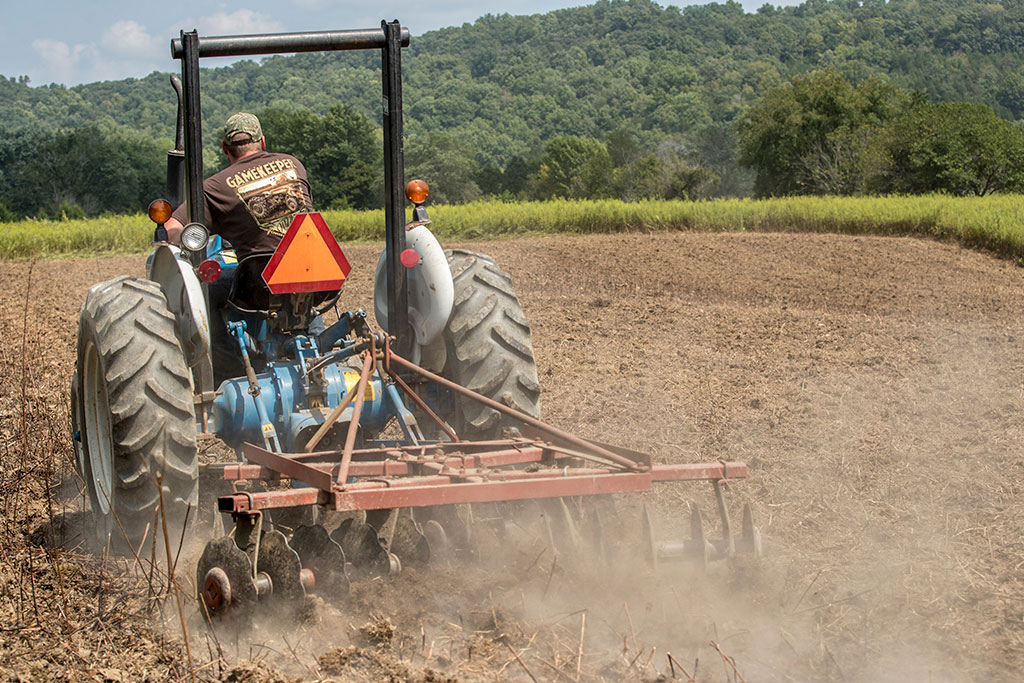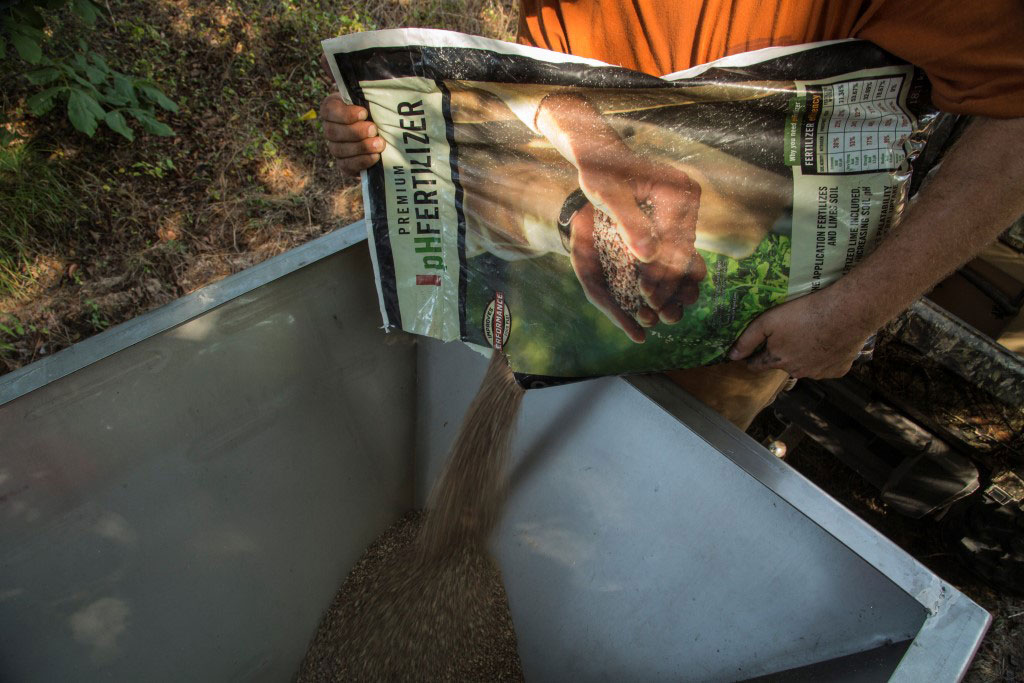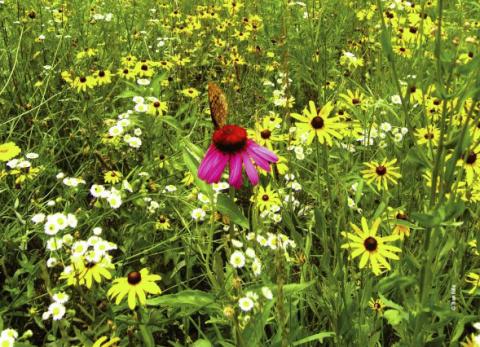Johnny McRight, DeltAg Formulations
To be successful in food plot management, we must plan in advance and know what we are planting and where. Then and only then can we take advantage of factors like a healthy seed bed, liming in advance of planting, release of nutrients from prior crop stubble and banking (storing) soil moisture for the upcoming crop. With advance planning, we can utilize the soil itself to help reduce overall costs.

For so many, the plan is to go out on a Saturday when time allows and clip down old stubble, plow, plant, cover the seed and go to the house. Sounds good and quick, but in reality we are creating about a 50% chance for success. If the soil pH is acid, we are not getting proper response to our fertilizers so that input cost is at best 50% wasted. If we are turning stubble residue under to compost while we are trying to grow a new crop, we are hurting the new crop’s potential. These two factors, an acid soil pH and poor residue management, will rob the seedling plants we are trying to grow of much needed water and nutrients. In reality, after the dollars invested and all our hard work we are reducing our chance at success.
Our soil is the one thing that is a permanent investment and the one asset that we must manage and care for. If we get careless and only worry about getting something green for foraging, we could easily create long-term conditions that will cause problems for years to come. Poorly composted crop stubble ties up valuable nutrients, uses up stored moisture, helps create compacted soils and over time will lower soil pH.
Our soils are alive!
The fertilizer that we buy is in one form and must be converted to another before a plant can use it. To convert these fertilizers and grow plants of any kind, our soils must have lots of bacteria and other microflora like algae, fungus, mold, yeast and even something called actinomycetes and micorrhyzae. These little microscopic organisms are almost always present in our soils and are absolutely necessary to compost and rot away the old crop residue that has lots of nutrients and are also the key to our purchased fertilizers being converted to the forms that plants can use. With standard practices like disking and fertilizing these organisms have to battle to stay alive and thrive. With advance seed bed preparation, we give these organisms an opportunity to re-establish their populations and activity in our soils. When we ignore the needs of our soils, we create an environment where the plant struggles for ample moisture as well as fertilizers that we have purchased and applied.
We must prepare our soils and add fertilizer to have success, but we need to take advantage of nature instead of battling with nature. This can be done by simply being aware of, not only what our plants need, but also knowing what our soils need and simply doing a little planning ahead. The odds are that most food plots lay idle throughout the summer waiting to be replanted for fall. By working them up in the early summer and allowing them to lay idle, we can rejuvenate the soil and take advantage of nature and at the same time reduce our costs and improve our chances for success.
When we disk old plants into the soil from a previous crop, this crop stubble must have time to be digested (composted) before the nutrients that are within the stubble will be released and available for the next planted crop.
How critical is this Soil Cycle in nature?
You can walk into the forest most anywhere in the country and find a 50 or 60-year-old acorn tree. This tree is gorgeous with foliage. It blooms every year and produces acorns (seeds) pretty much each and every year. Who is fertilizing this tree? We don’t think about it, but that old tree is dropping acorns, leaves, twigs and branches all year every year. This fallen plant matter decomposes and builds sod or organic matter under the tree that is recycled into fertilizer to feed the tree. This tree and every tree in the forest is being sustained by this Soil Cycle. All soils function in this same manner. In planning our food plots, we simply need to give our soils time for this cycle to recover before the next planting. At DeltAg, we developed Soil Solution to aid the soil in this recovery effort by feeding the organisms in our soils. But even with Soil Solution, the soil needs time for recovery.
Long and short…our soils are alive! Our job, as good stewards…no, our responsibility…is to protect and utilize nature as best we can and protect our soils.

How can we be better stewards of our soils?
If we go to the hunting land three or four months in advance of planting and pull samples, lime where needed and do the clipping and turning under of old residue, we would advance our purpose ten fold. This would buy the time the soil needs to consume the lime and raise the pH, compost the old residue into nutrients for the crop we want to plant, and store up soil moisture. When we come back in to plant the crop, we have a much better seed bed and old residue that has composted and becomes an asset rather than a detriment to our next crop.
Soil or Dirt?
The first time farmers break their soils in the spring of each year, there is nothing like the aroma of the soil. It is the most aromatic smell ever. Yet when the soil is broken the second time in the spring, the aroma is gone and it smells more like dust. The reason is that when first disked, we are turning up and smelling the aroma created by all of these microorganisms that have been active in our soils. Yet when we turn them over and expose them to the atmosphere, the sun and our applied fertilizers, we kill them off quickly and in large numbers. Some two to four weeks later, we break the ground again, but before these organisms can repopulate and become active again. By the time we get the crop planted, we are into the hot dry season or the cold winter and the topsoil moisture and temperature are adverse to their growth. Simply put, we take healthy, loose soil that is alive with organisms and we plow and fertilize and turn it into dirt.
Food Plots: Still the Most Economical Food Supplement
I am still amazed to see so many hunters hauling tons of corn or other grains away from the feed store to supplement their deer herd. There is no doubt that, even with high fertilizer costs, food plots are still the most economical way to supplement our wildlife nutrition.
A food plot with as much as $100 in cost per acre would still generate some 4 or more tons of forage which is less than $25 per ton of nutritious, high protein food for our wildlife. If we were feeding corn in 50 pound bags, it would cost over $1,200 per acre to generate that much food.
With good management of our soils and advance planning, we can ward off these high input costs and have healthy food plots that will feed our wildlife throughout the summer, fall and into the winter.
SOIL FACTS to Remember:
- Only a soil test will determine what our soils need. Soil Test. Don’t Guess!
- Soil pH determines availability of fertilizers. In acid soils we must get the lime applied!
- Old crop stubble from prior years releases nitrogen, phosphate and potash once composted!
- Soil health is VITAL to how a plant responds and grows!



























